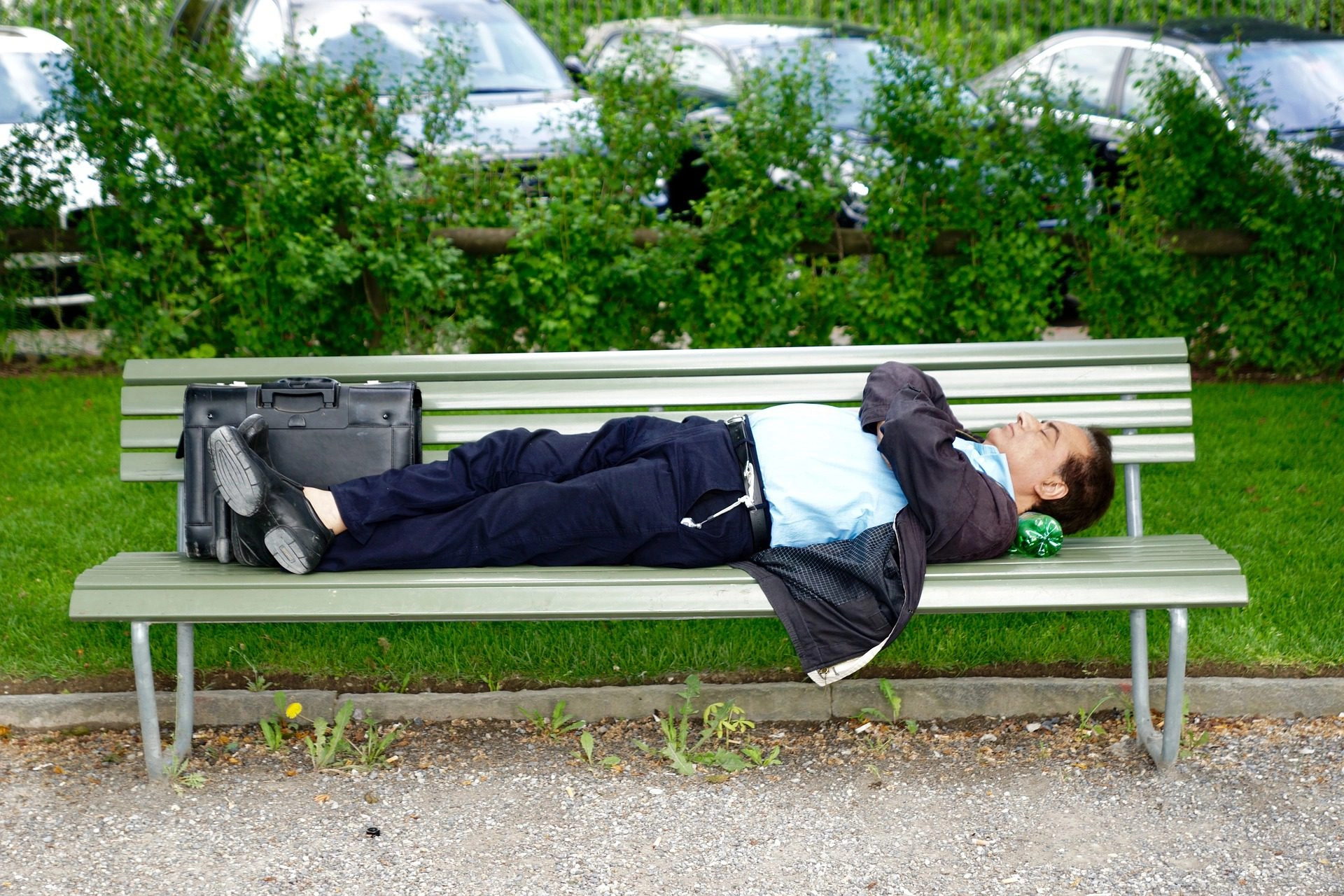Sleep is supposed to bring our bodies physical and mental restoration. Yet, if we are tossing and turning with pain instead of sleeping, this will likely not happen. Waking up in with pain is a good sign that something can be improved with our sleeping posture. If pain seems worse once we have awakened and just recently gotten out of bed, this may be a good indication that our sleeping habits have some room for improvement.
Choosing the best sleeping position for you will depend on your existing pain conditions (spinal health), personal comfort, and physical makeup. You may want to consider having more than one ‘favorite’ sleeping position. This way various portions of the body are allowed to rest in different positions through the night.
The trick is to figure out what works for you and tweak it to ensure that your spine is properly aligned as you enjoy each sleep position. Try focusing on one or two favored positions and work from there to find what is most comfortable for your body. Having more than one ‘best’ position may be especially beneficial if you have more than one pain condition to consider.
Existing pain conditions can make it difficult to find a position that really works well. Lower back pain can be tricky because, while sleeping is meant to relieve the body of itself for a time, many sleeping positions actually place additional pressure on the spine. You may only need to alter your positions for a time as you heal from an injury.
Conversely, it may be necessary to try to make small for changes toward a new long-term habit of sleeping in a ‘spine-friendly’ manner. Allow the process to take place over several nights or even weeks. If changing your sleeping positions all at once sounds daunting, try small increments one at a time and give your brain time to adjust to each one before adding another. Perhaps, try one new bit of tweaking every few nights or once a week.
For example, try sleeping for a few hours each night on your back with your knees supported, instead of a whole night. Next, try that for a couple of nights and then try placing a pillow between your knees for a portion of the night. Lower back pain that is emphasized as a result of sleeping posture is not likely to be fully relieved in just one night.
However, you should begin to notice a dramatic difference within a few nights. It may take longer if chronic pain or injuries are present. It will be important to remember that pain that has been present for any length of time, may require some time for recovery.
If your sleeping positions have been poor for some time, the body may have begun trying to adjust to the improper posturing and make take some time to recognize the new more aligned positions. It may not take years and years but will likely take longer than just a single night of sleep for your body to begin to catch up with its new aligned sleeping postures.
You may very well find great relief after just a few nights with a healthy sleeping posture, but certainly, do not lose hope if it takes more than a few nights. You will need to gauge for yourself if a new position is worth continuing to try. If something does not work, do not completely write it off as ineffectual until you have tried it again a time or two.
If you feel something did not work well the first time, try altering it in some manner the second time. Should you desire to try sleeping in a reclined position and it does not seem to help, try angling slightly up or down the next time. Remember that the goal is to relieve and prevent pain.
If you wake in the night to great pain, then perhaps that is not the best posture for you. If pain increases at any time, make sure that another source of pain was not also in progress. (Did you also try something different at the gym on the same day? If so, be sure to take this into consideration as you assess your new sleeping postures.) You will also need to consider daytime activities in relation to possible pain conditions. Sleep should help diminish pain, but daily actions must not be forgotten.
A Few Sleep Positions to Try for Lower Back Pain
If you are really having trouble determining your current sleeping postures are affecting your spine try these steps:
- Try to think about your sleeping position before you move even the slightest bit in the mornings. Before getting out of bed, take stock of where your limbs are placed as you wake.
- Ask someone else what they notice about how your body is placed during the night. (Chances are someone sleeping near you will get up to use the facilities. Ask them to try and notice your body placement during the night.)
- Have someone you trust help you try out some of the new postures. Ask them to stand to the side of the bed and help you try to determine if your spine appears to be swayed. It is sometimes difficult for us to tell this on our own because when we try to turn and view our body, we alter the position we are trying to maintain.

The Spine Isn’t Totally Straight?
It is not so much that you absolutely must have your spine flat and stiff as you sleep. If you were to look at your spine from the side of your body, you would notice much more of its natural curve. This curve is not seen as clearly when viewing directly from the front or back of the body.
It is beneficial for lower back pain sufferers to be mindful of this natural curvature. Adjustments can more easily be made depending on how we wish to sleep. If the spine begins to sway beyond its own natural curvature, then pressure may be put onto the spine. This may not cause immediate pain. However, pain may develop if pressure is repeatedly brought to the body and spine.
Sleeping on one side often brings us to twist the spine in some manner as we find a place for each leg. Placing a pillow between the knees helps to provide a place for each leg to rest comfortably – without giving the spine an unnecessary twist. We twist and turn throughout our daily activities, but this is different than staying in that position for many hours through sleep.
Muscles and ligaments in the body tend to relax during sleep – or at least they are supposed to relax. When we allow the spine to twist during this time of extended rest and relaxation, we open the door for pain. The body needs to rest in a neutral position that prevents twisting and pulling of the vertebrae.
Sleeping to Prevent Pain and Relieve Existing Pain
Some sleep positions can make existing pain worse – or be a portion of the initial cause of lower back pain. Here are a few things on which we can focus when seeking to eliminate pain caused or increase by our sleeping positions:
- Maintain the natural curvature of the spine while sleeping.
- Avoid undue pressure on the neck, back, and hips that can cause pain.
- Make sure the hips, torso, shoulders, and head are aligned. Support the spine this alignment in mind.
A Few Sleeping Positions to Try for Spinal Health
Not many people sleep well on their backs, but perhaps more people would try if we better understood the benefits. Sleeping on the back provides a wonderful sleeping position for the spine. The curves of the body are not as likely to place pressure on the spine. Back sleeping lends well toward overall spinal alignment.
If you are able to rest well on your back, then you may benefit from a few alterations to this sleeping posture. Sleeping on your back with your knees slightly raised and supported keeps the joints from locking. This allows blood to flow freely, further promoting rest and health in the body. Individuals with sciatic pain may not favor back sleeping if resting on a firm mattress.
Sleeping while reclined on the back allows some people to rest well. Others may find that it causes pain, or simply not be able to sleep well. The exact location of your lower back pain, your body make-up, and the angle and surface you choose will all have an effect on whether or not sleeping on your back while reclined will help.
It may be helpful to note if sitting in a reclined position helps relieve any of your pain symptoms. If so, then it may be worthwhile to see what happens if you sleep in a similar position. Sleeping while reclined to some degree may be a reasonable compromise for some low back pain sufferers.
Even if we cannot manage to rest well on our backs, we have much to benefit from addressing existing sleeping postures. Tips for sleeping positions should we try:
- Knee support while on your back
- Reclining while on your back
- Side sleeping
- Fetal position on your side
- Preferably place a pillow between the knees, possibly under the mid-section, for side sleeping positions.
Sleeping on your stomach is not generally recommended. This is because sleeping on your stomach means that your neck must be turned to one side or the other in order to breath. This places stress on the neck and spine when your body is supposed to be resting and recovering from the day. If you feel you absolutely must sleep on your stomach, consider placing a thin pillow under your belly and hips to help with spinal alignment.
Considerations for a Back Friendly Mattress
If you are able to sleep on your back, consider a thinner pillow for your head. A pillow that is too thick can place your head too high in relation to the rest of your body. If you sleep on your side, you may need a thicker pillow. The key is to ensure that your head is resting comfortably in a position that prevents your neck from bending up or down. Your head should align well with the rest of your back.
A mattress that is incredibly firm can place undue pressure on the hips and shoulders. A squishy, soft mattress may feel like a cloud at first, but can cause the spinal column to bow out of alignment eventually causing pain. Think about trying to draw a straight line from one end of your body from your head to your toes.
Not that you should try sleeping like an arrow, stiff and inflexible. Rather, that if a line were to be drawn horizontally through the center of your body, from your feet through the top of your head, the line would be reasonably straight. The natural curves in the body play a role in where the spine ends up when we lie down in any position.
Key points to look for in a mattress:
- How well does the mattress distribute weight?
- Does your spine become distorted while lying on the mattress?
- Is the mattress itself in good condition? (e.g. Does it bow in the middle or on the sides?)
- Does the foundation or box spring seem to do its job supporting the mattress?
A mattress that is extremely soft may offer the same scenario as a waterbed. Waterbeds, while once very popular, do not generally offer the spine much support. The swish and sway of the liquid-filled interior usually allow for too much give, resulting in a swayed spine.
A firm mattress may sound like a logical choice if we are trying to create an environment that allows for the spine to be somewhat parallel to the floor. However, the problem here is that the body itself is not totally straight. Humans have bumps and curves (hips, buttocks, shoulders, etc.) that prevent us from ‘totally straight’ positions. These bumps and curves create natural valleys and rises along the body. This means that the natural design of the body gives cause for the spine to sway up in a manner that causes pain.
So, what can we do? Find a mattress that offers enough squishy softness to allow for the bumps and curves to rest naturally. Yet, one is still firm enough to provide support under that squish to prevent the spine from swaying down beyond its own natural curvature. Find a mattress that fits your body and allows you to relax comfortably in more than a single sleeping position if possible.

Is Resting in a Hammock Safe for Lower Back Pain?
Considering an afternoon nap in a hammock? Ah, sounds nice, huh? You may have decided to try a hammock at one point, only to raise up with increased back pain after a short time. Remember the imaginary line that we drew through your body?
Resting in a hammock with spinal health in mind is not tricky, but often not considered. You will need to be able to shift your body so that your spine is parallel to the floor or the ground. This will usually mean that you are on a bit of an angle within the fabric of the hammock. Some hammock designs will lend better to this than others.
Many portable, flexible styles work very well for aligning the spine and allowing the user to ‘stretch’ out fairly straight. It is the bow in the curve of some hammocks that can pull on the lower back in a way that may cause pain. It will be especially important in stiffer hammock styles to try to shift your body so that it is just off center with the fabric of the hammock.
Resting in a reclining position in a hammock is possible but may take some practice. Reclining in a hammock in a manner that does not lead to lower back pain may put you in more of a seated position. Therefore, reclining may be best for non-sleeping relaxation times.
A side, fetal position is also sometimes possible but may be more difficult for some. If your feet and head are raised above your torso, your lower back may let you know that it is not happy. If you choose to rest, or sleep, in a hammock be sure to note if your spine seems to ‘bow’ in any direction. Relaxing in a hammock may be just what is needed to minimize stress on you and your spine!
Putting It All Together to Minimize Lower Back Pain
Many of the same postures that are known to help minimize pain, may also be used to prevent pain. If you do not have current pain and are seeking ways in which you can minimize pain in the future, these techniques are a great place to start. Prevention of pain is the best medicine.
If you find yourself already experiencing lower back pain, steps can be taken to minimize and reverse the condition or conditions that may be leading to that pain. Chiropractic treatments are beneficial for alleviating lower back pain and working to prevent the potential pain conditions. Chiropractic massage therapy is a great addition to causing the body to relax naturally within its own dimensions.
When we allow ourselves to go about our days in a manner that minimizes stress in our brains and bodies, we offer an increased sense of calm for sleep. Preparing the body for sleep includes considering pain conditions that will find their way to our beds with us. Minimizing lower back pain may require more than one type of action for pain sufferers. Daytime and nighttime actions will need to be considered for complete elimination of the sources of back pain.
Developing healthy sleep habits will often include considering the choices that we make during the daytime. If we allow our bodies to remain in a position for much of the day that is not friendly to our backs, finding a pain-free sleep position may be rather tricky. If we bring pain with us to the bed, this will likely complicate what sleeping postures will be comfortable for the lower back.
Lower back pain and poor sleeping positions can easily make one another more and more difficult to overcome if not remedied early in the development of pain. Speaking with your chiropractic physician early during pain development can be beneficial for slowing the momentum that may be encountered from the cycle of pain. Pain cycles may develop if we have a small bit of pain from activities during the day that becomes intensified through poor sleeping positions.
The same can happen if we sleep twisted up and then attempt to demand too much from muscles and joints during daily activities. We can help ourselves out by taking the time to focus on individual portions of our day and night. Try to determine if it is, in fact, a sleeping posture that is causing pain, a daytime activity, or a combination.
Perhaps, the real cause is a work-related habit that settles in overnight due to a poor sleeping position. In this case, both scenarios need to be adjusted for pain to safely be removed from one’s lifestyle. Alleviating lower back pain begins be determining all sources of the pain and working to remove those sources. Chiropractic care is fully designed to work on this concept of pain removal for lower back pain sufferers.
Spine Health for Better Sleep
Better Health Chiropractic and Physical Rehab is equipped to help lower back pain sufferers decrease pain symptoms and further direct personal sleeping positions. Contact us today at 1.877.346.5255 to schedule a consultation.









